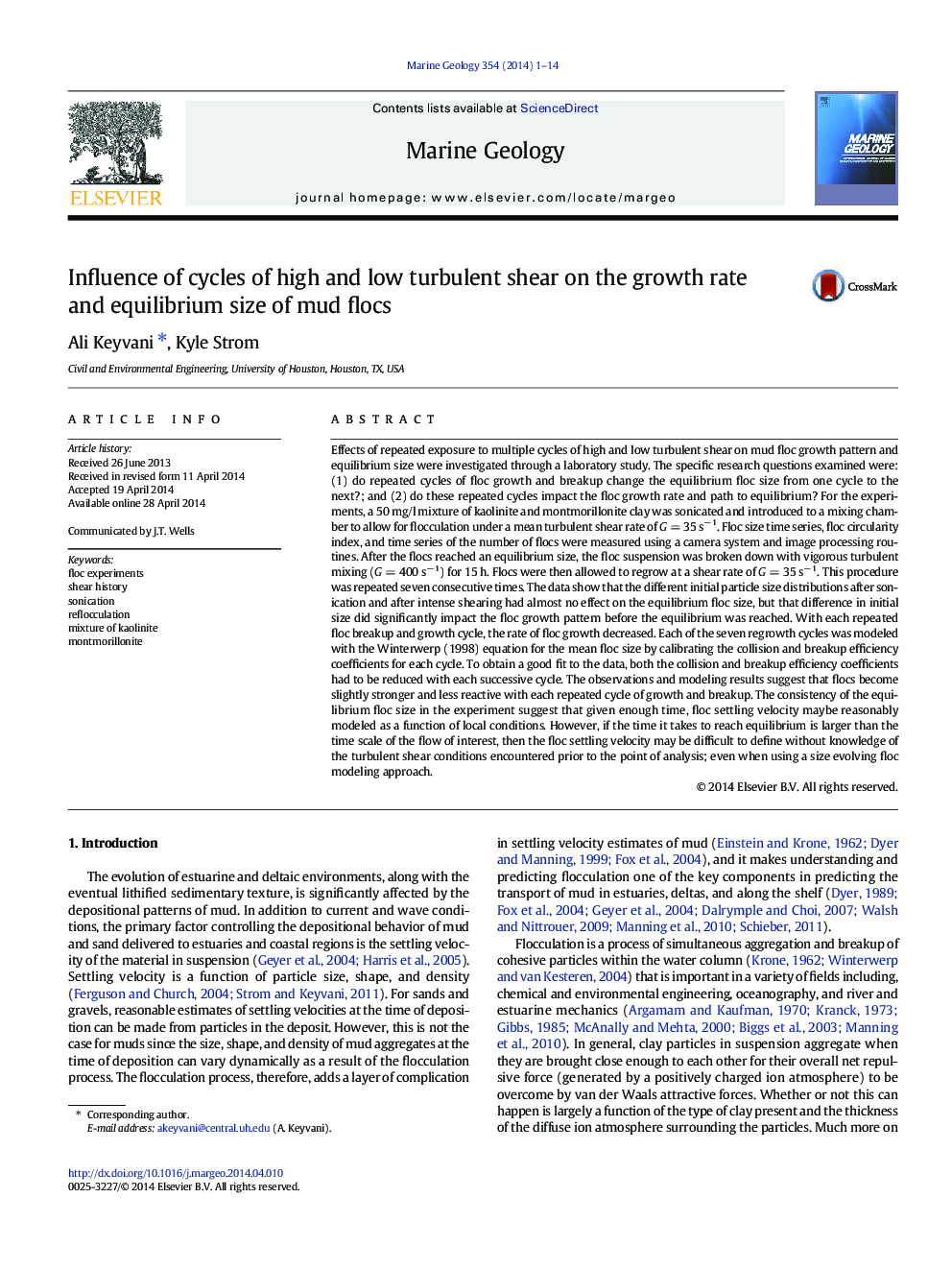| کد مقاله | کد نشریه | سال انتشار | مقاله انگلیسی | نسخه تمام متن |
|---|---|---|---|---|
| 4718247 | 1639098 | 2014 | 14 صفحه PDF | دانلود رایگان |
• Eight successive cycles of high and low shear rates were tested on a mud suspension.
• The equilibrium floc size was found to be only dependent on the turbulent shear rate.
• Repeated cycles of high and low shear rate affected the floc growth pattern.
• Flocs become stronger and less reactive after each cycle of high and low shear rates.
Effects of repeated exposure to multiple cycles of high and low turbulent shear on mud floc growth pattern and equilibrium size were investigated through a laboratory study. The specific research questions examined were: (1) do repeated cycles of floc growth and breakup change the equilibrium floc size from one cycle to the next?; and (2) do these repeated cycles impact the floc growth rate and path to equilibrium? For the experiments, a 50 mg/l mixture of kaolinite and montmorillonite clay was sonicated and introduced to a mixing chamber to allow for flocculation under a mean turbulent shear rate of G = 35 s− 1. Floc size time series, floc circularity index, and time series of the number of flocs were measured using a camera system and image processing routines. After the flocs reached an equilibrium size, the floc suspension was broken down with vigorous turbulent mixing (G = 400 s− 1) for 15 h. Flocs were then allowed to regrow at a shear rate of G = 35 s− 1. This procedure was repeated seven consecutive times. The data show that the different initial particle size distributions after sonication and after intense shearing had almost no effect on the equilibrium floc size, but that difference in initial size did significantly impact the floc growth pattern before the equilibrium was reached. With each repeated floc breakup and growth cycle, the rate of floc growth decreased. Each of the seven regrowth cycles was modeled with the Winterwerp (1998) equation for the mean floc size by calibrating the collision and breakup efficiency coefficients for each cycle. To obtain a good fit to the data, both the collision and breakup efficiency coefficients had to be reduced with each successive cycle. The observations and modeling results suggest that flocs become slightly stronger and less reactive with each repeated cycle of growth and breakup. The consistency of the equilibrium floc size in the experiment suggest that given enough time, floc settling velocity maybe reasonably modeled as a function of local conditions. However, if the time it takes to reach equilibrium is larger than the time scale of the flow of interest, then the floc settling velocity may be difficult to define without knowledge of the turbulent shear conditions encountered prior to the point of analysis; even when using a size evolving floc modeling approach.
Journal: Marine Geology - Volume 354, 1 August 2014, Pages 1–14
